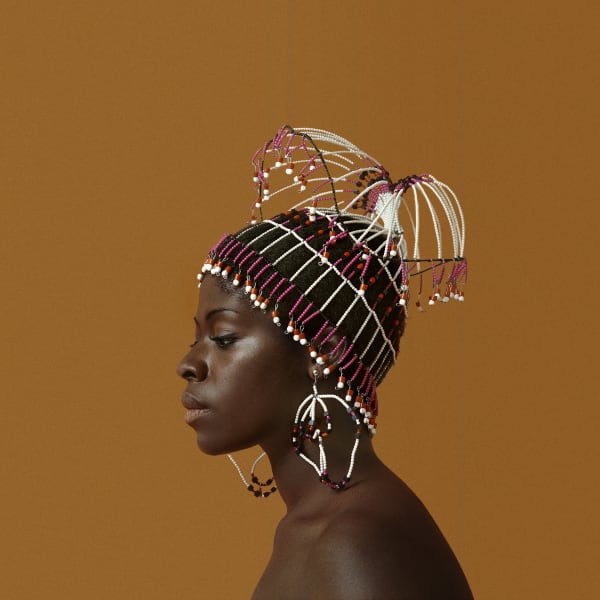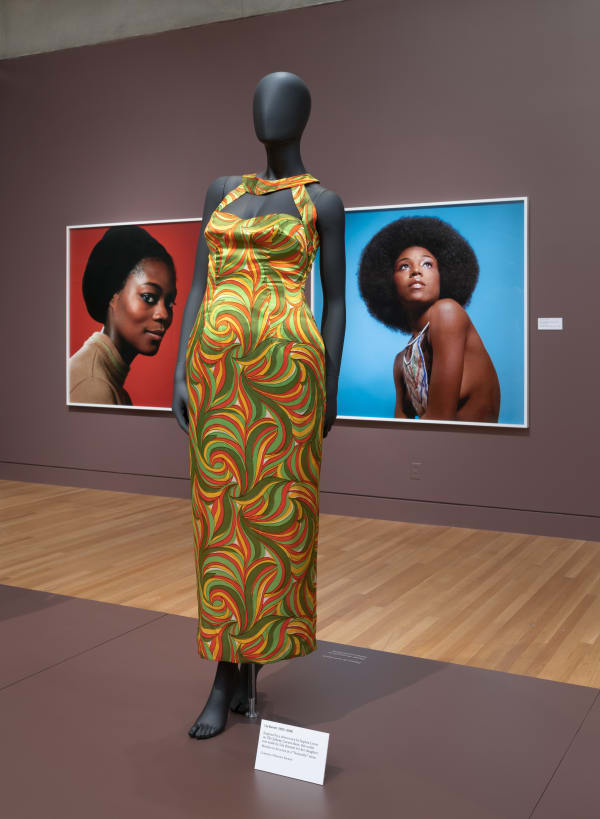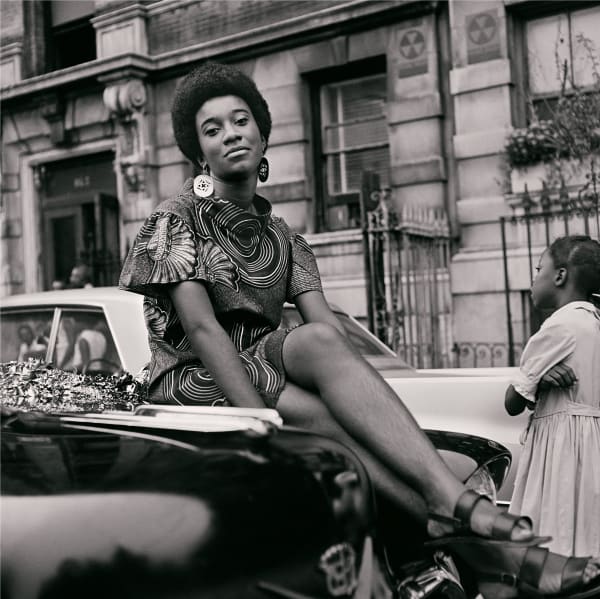Images of black Americans’ deaths and suffering have been a permanent fixture in our cultural history, while those celebrating black personhood and pleasure have been less widely known and shown. Recent years have brought a range of efforts to balance this trend, from the scholar Deborah Willis’s book “Posing Beauty: African American Images from the 1890s to the Present” to the hashtag #BlackGirlMagic. The exhibition “Black Is Beautiful: The Photography of Kwame Brathwaite,” organized by the Aperture Foundation and accompanied by a publication of the same title, is the latest — a tribute to a man who captured the soul of a new movement celebrating African-American style and identity (and whose achievements are now inspiring the pop star Rihanna).
Offering a small sample of a larger oeuvre, “Black Is Beautiful,” at the Skirball Cultural Center here, is the first solo museum show devoted to Mr. Brathwaite. It features 41 mostly black-and-white pictures he shot largely in the Bronx and Harlem in the 1950s and ’60s, as well as contemporaneous clothing, jewelry, posters and album covers. The photographs depict dapper black men in suits, congregating at jazz concerts, and black women with natural hairstyles striking elegant poses in African-print clothing. As the exhibition makes clear, though, Mr. Brathwaite’s talent for creating images extended far beyond taking pictures. Despite going underrecognized in the years since, he was at the time a social force who helped gather and empower African-Americans, rallying them around the slogans “Think black, buy black” and “Black is beautiful.”
Mr. Brathwaite, born in Brooklyn in 1938 to Barbadian immigrants, was raised in the Bronx. In 1956, around the time of his high school graduation, he teamed up with his brother Elombe Brath and a group of friends to form what became the African Jazz-Art Society and Studios. (Both the artist and his brother adopted West African names in place of their given ones, and Elombe shortened his last name.) The organization was part social club, part arts collective, part political statement: Mr. Brathwaite and his cohort were disciples of Marcus Garvey’s black nationalist, Pan-Africanist teachings.
The society also began organizing jazz concerts, first in the Bronx and then in Harlem. As the popularity of the shows grew, so did the profiles of the musicians and Mr. Brathwaite’s own status on the scene: A 1958 photograph captures Miles Davis blowing into a trumpet with his eyes closed and beads of sweat dripping down his face. Some of the strongest shots from this period demonstrate the power of music to bring people together, like a 1962 picture of a group of black teenagers awaiting the arrival of James Brown at an airport. Their signs, grins and raised hands convey an irrepressible energy that evokes Brown even without his physical presence.
In 1963, a protest against the opening of a white-owned wig shop on 125th Street helped catalyze the Black Is Beautiful movement. A photograph by Mr. Brathwaite shows a woman in slim heels pacing in front of the store with a sign. She carries herself with such confidence and poise that she could be walking a runway — and, indeed, the protester is Nomsa Brath, the wife of Elombe and one of the Grandassa Models, a group the jazz-arts society started the year before. Although it included members of both genders, women, with their natural hairstyles and brightly patterned, often homemade clothes, were the stars; they were also, as Tanisha C. Ford writes in the show’s accompanying book, the subjects of the most controversy.
In Mr. Brathwaite’s photographs, some of which are shot in rich color, the Grandassa Models seem to embody the ideal of empowerment through self-presentation. They smile, gaze and cock their hips with hard-earned confidence and self-possession. In one magnetic image from about 1970, a model looks up through long, carefully articulated lashes. Her semi-nudity gives her sex appeal, but her perfectly rounded Afro and the light blue background also make her look angelic.
Another striking pair of photographs shot outdoors at a public school in 1966 features groups of female and male Grandassa models, facing off as if they were gangs. No one smiles; the women lean back with an air of suspicion, while the men stand with their hands clasped in front of them, as if they were bodyguards. This is as close to militancy as Mr. Brathwaite’s subjects get. Their Afros may hint at the Black Power movement, but theirs was a different kind of activism — a politics of body positivity and aesthetic liberation.
It’s fortunate that “Black Is Beautiful” is on view at the same time that the Underground Museum here was showing Roy DeCarava’s intimate photographs of everyday black life, and that the Broad museum is hosting “Soul of a Nation: Art in the Age of Black Power 1963-1983” (through Sept. 1). Mr. Brathwaite’s work helps us see the full picture of African-American visual history, which is still coming into focus.






